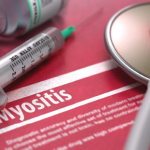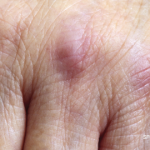The Presentation

lzf / SHUTTERSTOCK.COM
A pale, quiet woman—her mother—wheeled the girl into my clinic. It was a blistering Florida day, and the girl was shivering. She glanced up at me when I said hello and asked her name.
“Hi,” she said, giving me a broad smile. Her smile was the only broad thing about her. Her elbows and knees had contractured, twisting her into a narrow curlicue of herself. “Thank you for seeing me.”
“You’re very welcome. Tell me what brings you here.”
“Two years ago, I used to run 5Ks,” she said, “and now I can’t. Now,” she said, looking me in the eyes, “I’m here.”
I looked back at her, tried a smile, turned to the computer screen and typed.
We’re in Gainesville at the University of Florida. It’s a nice place. I like being here. I like that, after a hiatus of six years working as a hospitalist in a relatively under-resourced location two hours away, referring complex patients to a higher level of help, now I am that higher level of help. I’m training to be a subspecialist, a rheumatologist—or so I hope.
This is where the patients I used to refer—helpless, dread-filled people, benighted by their disease—come. This young woman here is one of them, and now I am the one filled with dread.
History
Her local rheumatologist sent her to us. She is 23 years old.
We went over her disease course. Two years ago, she could run miles, and now she can’t. A mysterious weakness had raged through her, weakening her muscles, inflaming her joints, enervating her until she was bedbound. She has had multiple hospitalizations in different community hospitals, interminable wait times for test results—for an answer—biopsies of her liver, muscles, skin, and the calcium deposits that had erupted everywhere. One year ago, she had responded to plasma exchange a neurologist ordered for her when she was hospitalized. She walked for a week before her strength rapidly waned.
She used to waitress, humming songs to herself, as she paid her way through college, and now she can’t. One neurologist. Two rheumatologists. Two dermatologists. More waiting. More tests, more flares, more unknowns. Unfamiliar terms, such as autoimmune disease, ALS, seronegative lupus, chronic Lyme disease, scleroderma and overlap syndrome had been incessantly thrown at her.
Back to the Present
So now she was here in my Fellows Continuity Clinic. Debilitated, twisted and in pain, and she wanted hope or death. In her eyes I saw both. The ravages of mind and body she had undergone had marked her permanently, and I was afraid. But I thought I knew what she had.



